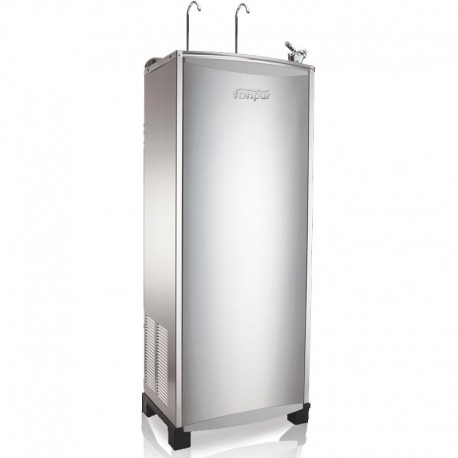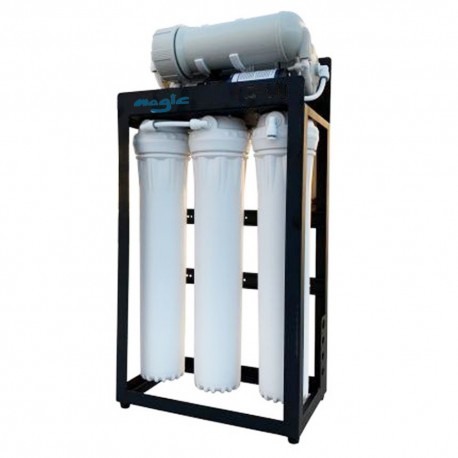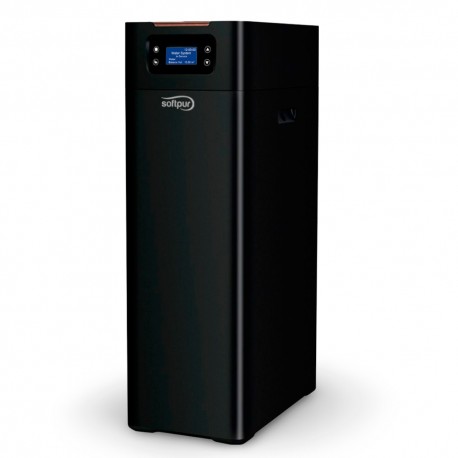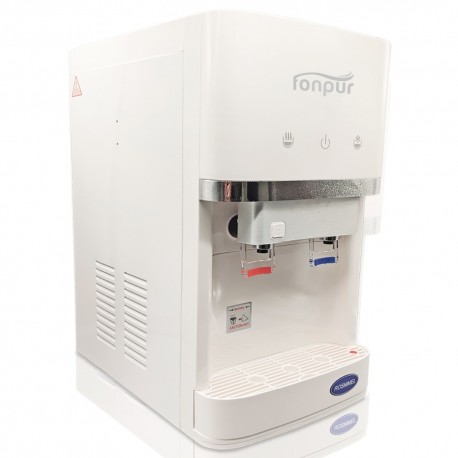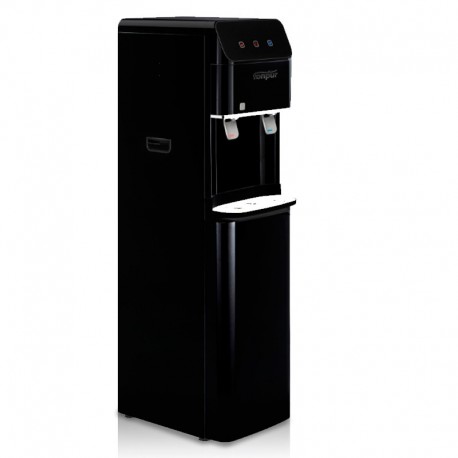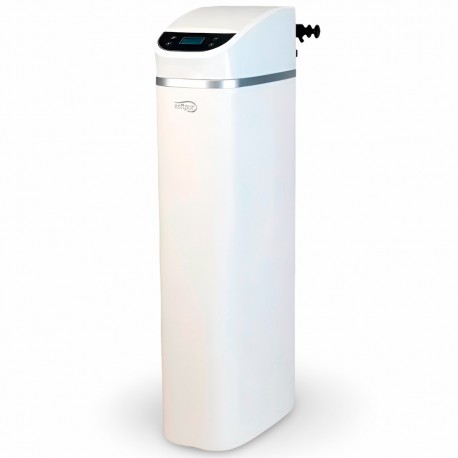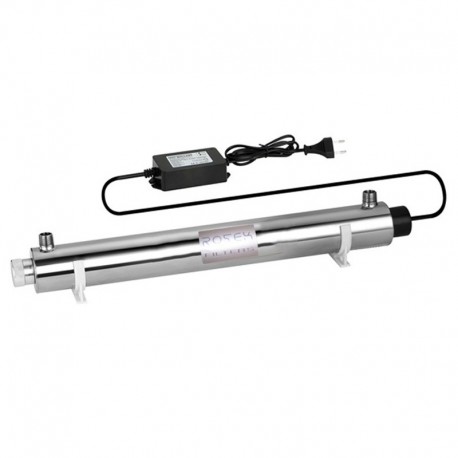Reverse osmosis (RO) is a process in which the flow rate through a semipermeable membrane is reduced and a push force greater than the osmotic pressure is exerted in the opposite direction to the osmosis process . In this way it is possible to separate the substances found in the water on one side of the membrane (concentrated) and on the other side a dilute solution low in dissolved solids (permeate) is obtained.
In order to purify the water we need to carry out the opposite process to that of conventional osmosis, it is what is known as Reverse Osmosis. It is a process with membranes. In order to force the passage of the water found in the brine stream to the water stream with low salt concentration, it is necessary to pressurize the water to a value higher than the osmotic pressure. As a consequence of this process, the brine will become more concentrated
How does reverse osmosis work?
1. Water flows from a column with a low content of dissolved solids to a column with a high concentration of dissolved solids.
2. The osmotic pressure is applied to prevent the water from flowing through the membrane and thus create an equilibrium.
3. In order to reach a pressure higher than the osmotic pressure, the water must flow in the opposite direction. Water flows from the high dissolved solids column to the low dissolved solids column.
Features of reverse osmosis
Reverse osmosis equipment requires pre-treatment systems, feed pumping equipment, pressurized tanks (membrane holders or housings) that contain the membranes, chemical dosing equipment, etc. so that they work properly.
- Membrane: This element is manufactured by winding membranes in a spiral shape, they are usually 40 or 60 inches long, and the most common diameters are 4 or 8 inches. During operation the water enters under pressure on one side of the housing, as it flows tangentially to the membrane, part of it passes through the membrane surface towards the permeate collector, while water with a high concentration of salts come out at the other end of the membrane.
- Pre-treatment: Pre-treatment to reverse osmosis systems is important to extend the life of the membranes and obtain better performance in reducing dissolved solids. One of the purposes of pretreatment is to prevent scaling. This phenomenon generally occurs when salts of low solubility, such as calcium and magnesium, settle and become embedded in the pores of the membranes. Scale control consists of pH adjustment (modifies the solubility of these salts) or the addition of antifouling (prevents the formation of crystals or slows their growth).


